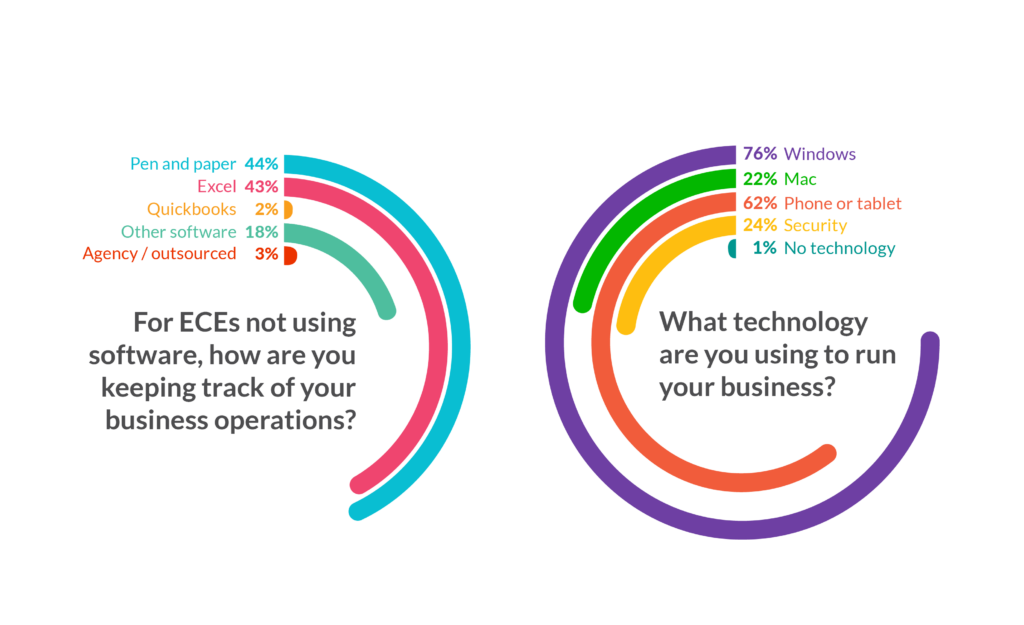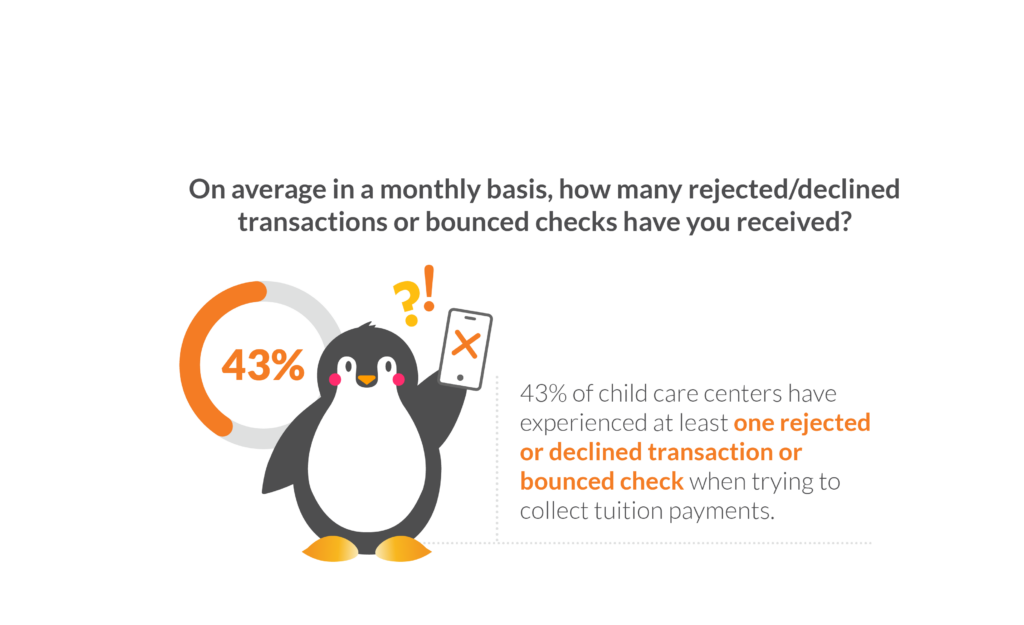
A Procare Solutions survey showed that 44% of early childhood education programs not using child care management software rely on paper and pencil to run their programs.
This finding, along with other relevant data related to the current state of the child care industry’s use of technology, is part of the 2024 Child Care Management Software Industry Trends Report.
This report was gleaned from the responses of a survey sent to over 100,000 stakeholders and illustrates industry benchmarks as well as how automation can put time back into child care providers’ days.
Let’s take a closer look at what survey respondents had to say about their technology use!
Child Care Management Software
Software as a service, in which users pay a subscription to access digital solutions, has become the norm for businesses. In fact, 99% of all companies use at least one such solution, according to DevSquad. Yet many child care providers are slow to embrace technology that has become the norm for other businesses.
Chanie Wilschanski, an early childhood leadership coach who is the CEO and founder of Schools of Excellence, points out that apprehension among child care owners and directors to adopt software often stems from a fear of the unknown and a reluctance to step out of their comfort zones.
“Despite the reluctance to invest time in learning new software, it’s crucial for them to overcome this hesitation and embrace the learning curve, as doing so can ultimately save time in the future,” said Chanie. “An essential aspect of successful software implementation is educating the staff on the reasons behind it and demonstrating how the technology can simplify their tasks.”
Check out these survey results to see how child care programs not using software are managing their businesses:

Software can take care of many tasks that take time away from important work with children. These tasks include tracking payroll records and even calculating paychecks, as well as generating reports and insights for programs’ back-office needs.
By embracing child care management software, center directors are able to automate routine tasks, simplify administrative processes and enhance communication with parents! This leads to quality programs, increased parent satisfaction and better overall outcomes for children.
Automated Billing and Payment Processing

Struggling with billing and payments also is weighing heavily on the minds of providers. An astounding 43% of child care centers have experienced at least one rejected or declined transaction or bounced check when trying to collect tuition payments in the last month.
Today’s parents want options for making payments, and centers accepting only cash and checks are likely not providing today’s parents with the payment methods they prefer.
Checks and cash can create an accounting headache. Storing cash and checks until there’s time to get to the bank to make deposits poses security and theft risks. Additionally, the odds of making bookkeeping errors are high, especially at child care programs in which leaders do not have specialized accounting training.
Yet about a quarter of respondents to the Procare Solutions survey said they believed that paper checks are the most secure payment method, even as checks become an increasingly concerning security issue.
As check use has rapidly declined since the turn of the century, check fraud has risen sharply, particularly since the pandemic, according to a 2023 New York Times article about check fraud.
A similar number of respondents said they believed cash is the most secure payment method. However, only 12% of consumers prefer paying with cash, according to Small Business Trends.
Child care management software can handle automated tuition collection and provide electronic reporting, which gives providers access to records on their phones and computers, and ensures accuracy.
How Procare Can Help

Child care automation software can save child care providers between 60 and 80 hours a month, according to Monique Reynolds, vice president of Early Childhood Education Business Support and Sustainability of Quality Care for Children.
In one case, she calculated that before automation, doing payroll and other human-resource related tasks would take six to eight hours biweekly. After automation, that time dropped to one to two hours.
With attendance tracking and subsidy reconciliation, that time shrank from 10 hours a week to just 30 minutes.
Now is the time for programs to think about using automation to meet the needs of this generation of parents and to grow and prosper!
Adopting software solutions is no longer a luxury — it’s a strategic necessity to address today’s needs while paving the way for sustainable growth. It’s imperative that child care providers equip themselves to meet the evolving expectations of modern parents.
Procare, the all-in-one child care management solutions, is designed to be both cost effective and comprehensive. Procare alleviates the operational pressures you face daily, so you can remain focused on their most important work — nurturing young minds.
Download your free copy 2024 Child Care Management Software Industry Trends Report to learn more about what’s happening in early education, including:
- Software usage
- Accounting practices
- Enrollment strategies
- Parent engagement techniques
- Curriculum and ECE
- Challenges faced by the industry
To provide more context to the findings, Procare Solutions partnered with experts in several areas of early childhood education. Their knowledge in the report will help you assess your operations and improve the education you provide to young learners preparing for kindergarten!

